How does the ESFP personality fit into the Big Five personality traits?
Reading time: 5 minutes

Gregory Park, Ph.D.
Author
In personality studies, scientific researchers often use a trait-based approach to describing the differences between people instead of using personality types. The most well-established method is the Big Five, which describes differences along five broad dimensions:
Personality types can be thought of as a very rough approximation of someone’s combination of underlying personality traits. Two people with the same personality type will be somewhat similar on these dimensions, but no two people will be exactly the same.
ESFPs tend to share a similar combination of traits, so as a group, they also share some common patterns of thinking, behaving, and relating to other people.
In the graph below, you can see where ESFPs fall along each of the Big Five dimensions. Every dot is an individual ESFP, and darker blue areas means more ESFPs fall in that area.
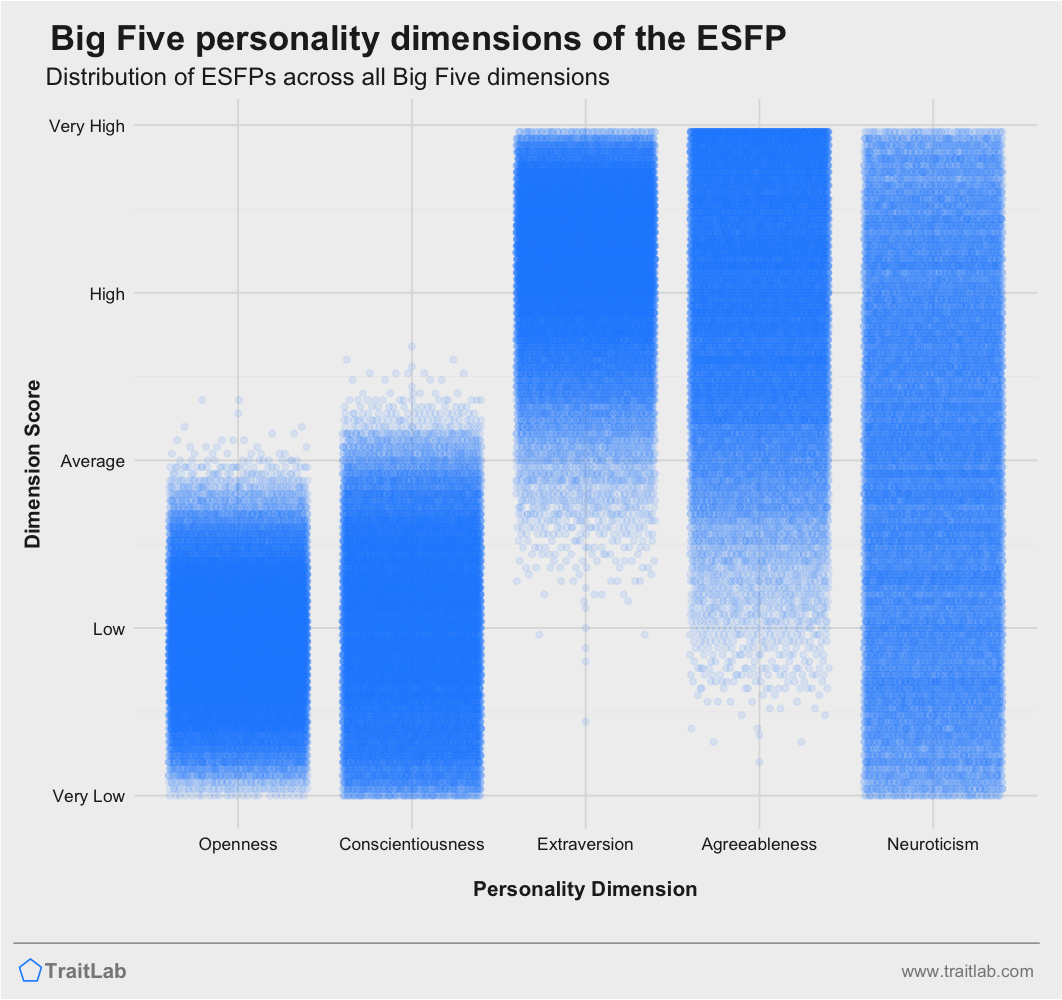
For example, on the Agreeableness dimension, ESFPs tend to score higher than average, so the High and Very High areas are very dark blue. But, you might notice that there are a few blue dots in the Low area of Agreeableness.
So, while most ESFPs tend to be on the higher end of Agreeableness, there are a few exceptions.
Below, you can see more detail on how ESFPs score on each Big Five dimension.
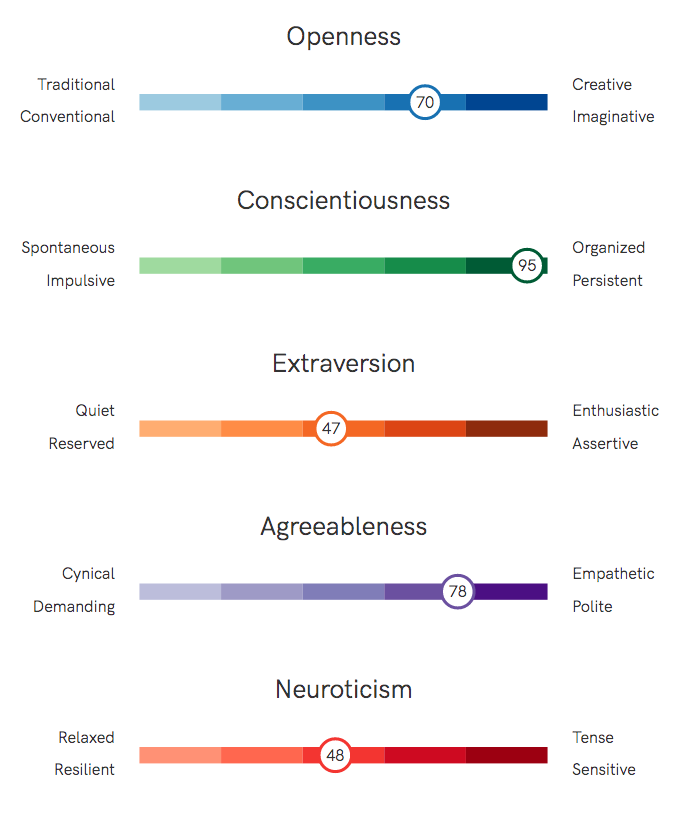
Do you know your Big Five?
Learn about your personality traits and so much more with TraitLab's comprehensive assessment.
ESFPs tend to score lower on Openness to Experience, meaning they are often more conventional or traditional. Almost all ESFPs score below average on this dimension.
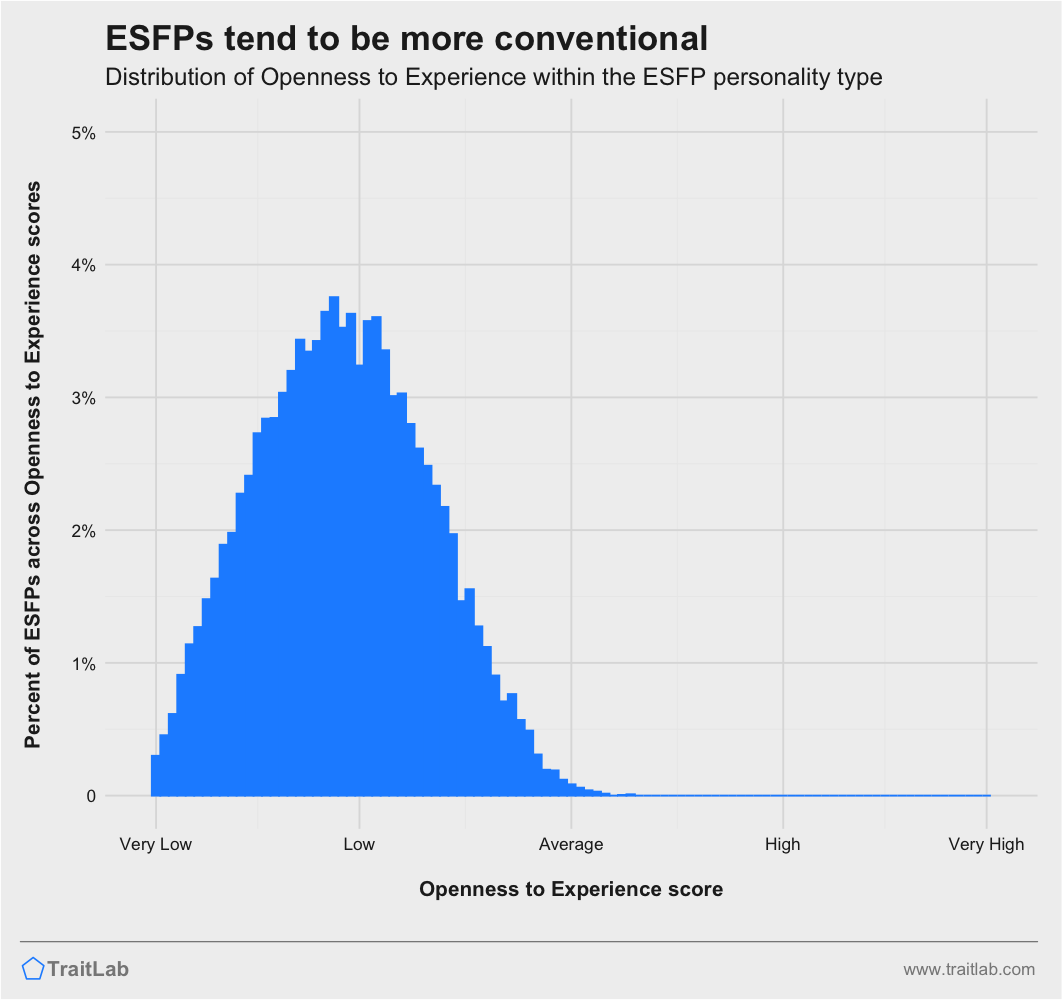
Openness to Experience describes your need for new information, feelings, and experiences.
Less open people prefer the familiar ways of doing things. They are less interested in trying new things or seeking out new experiences. They also tend to be less eccentric and have more conventional tastes in hobbies, music, and reading material.
Highly open people have diverse interests, and they may feel a constant need to learn and try new things.
ESFPs typically score lower on Conscientiousness, with about 95% of ESFPs scoring below the average.
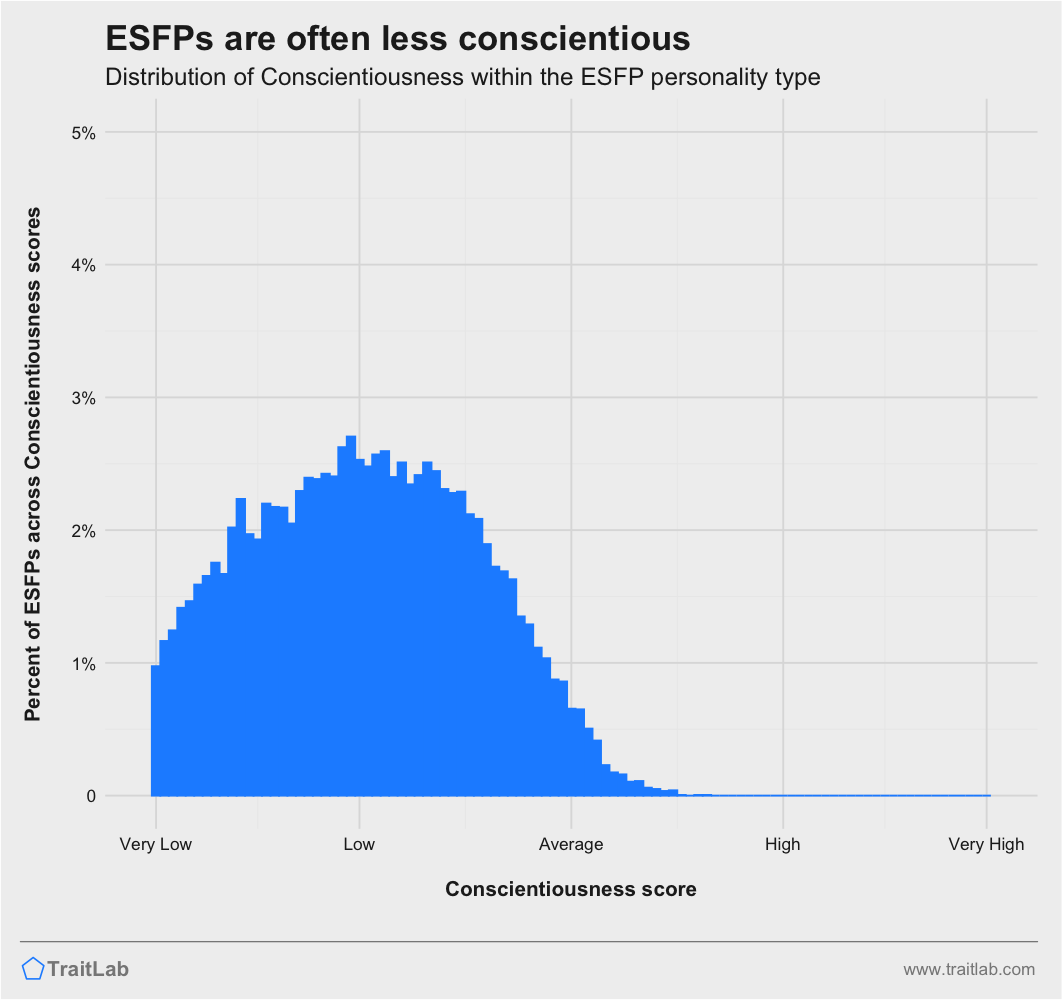
Conscientiousness describes your tendency to plan, organize, and persistently focus on long-term goals.
Less conscientious people, like many ESFPs, tend to be more spontaneous or impulsive. They are more interested in the present or short-term future, and more likely to change their mind, or change direction when obstacles arise.
Highly conscientious people are more likely to set goals far in the future, then come up with detailed plans on how to achieve these goals. They are also more likely to stick to the goals they set and more persistent in working through difficulty to reach them.
ESFPs almost always score on the high end of Extraversion, with about 95% of ESFPs scoring above average on this dimension.
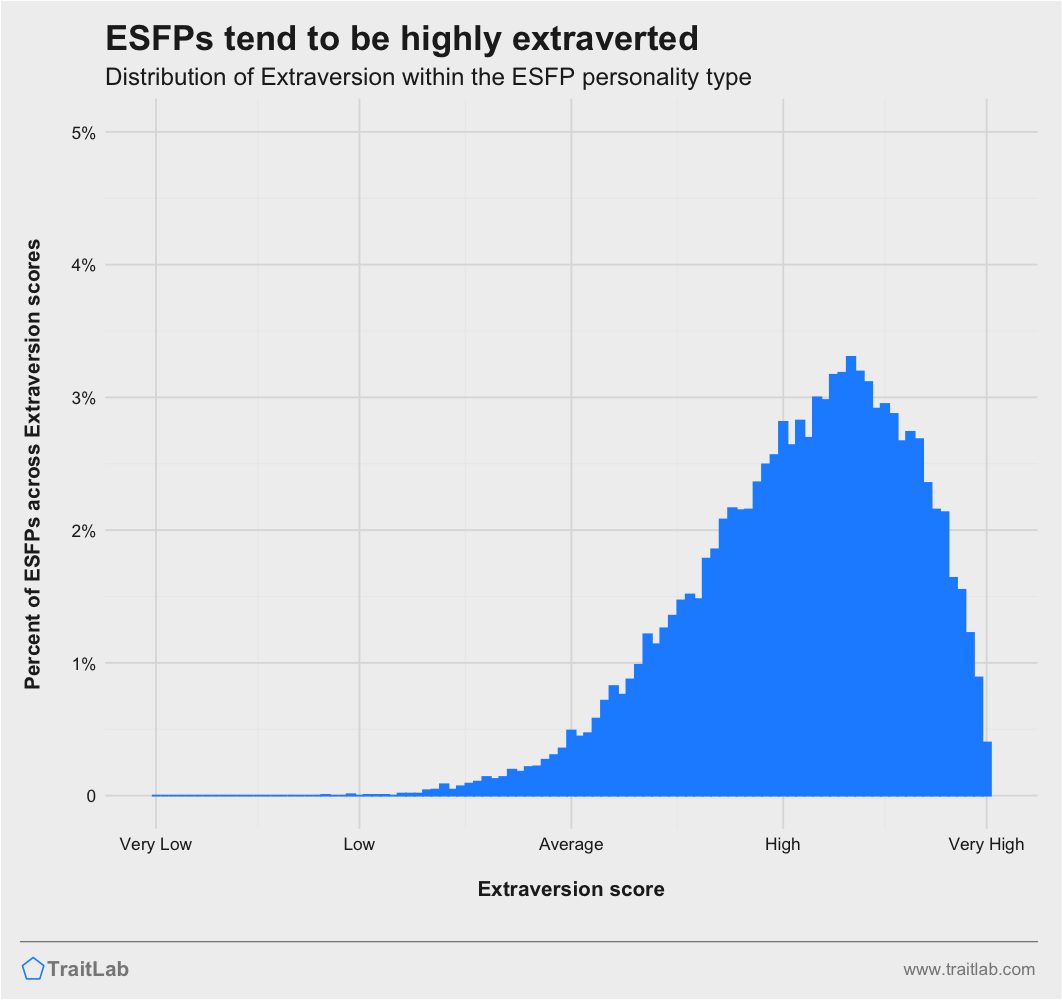
Extraversion describes your assertiveness, enthusiasm, and experiences of positive emotions.
Like many ESFPs, highly extraverted people tend to be more socially outgoing and talkative, and they often seek out more stimulating environments (think loud, crowded, or risky and exciting situations). High extraverts also feel and express positive emotions (e.g., joy, laughter, excitement) more intensely and more frequently.
Highly introverted people are more socially reserved and quiet. They have a lower tolerance for highly stimulating environments and often retreat to calm and quiet situations in solitude. They also experience positive emotions less intensely and less frequently. For example, others may notice that introverts tend to smile and laugh less often than most.
ESFPs usually score highly on Agreeableness, with about 90% of ESFPs scoring above average.
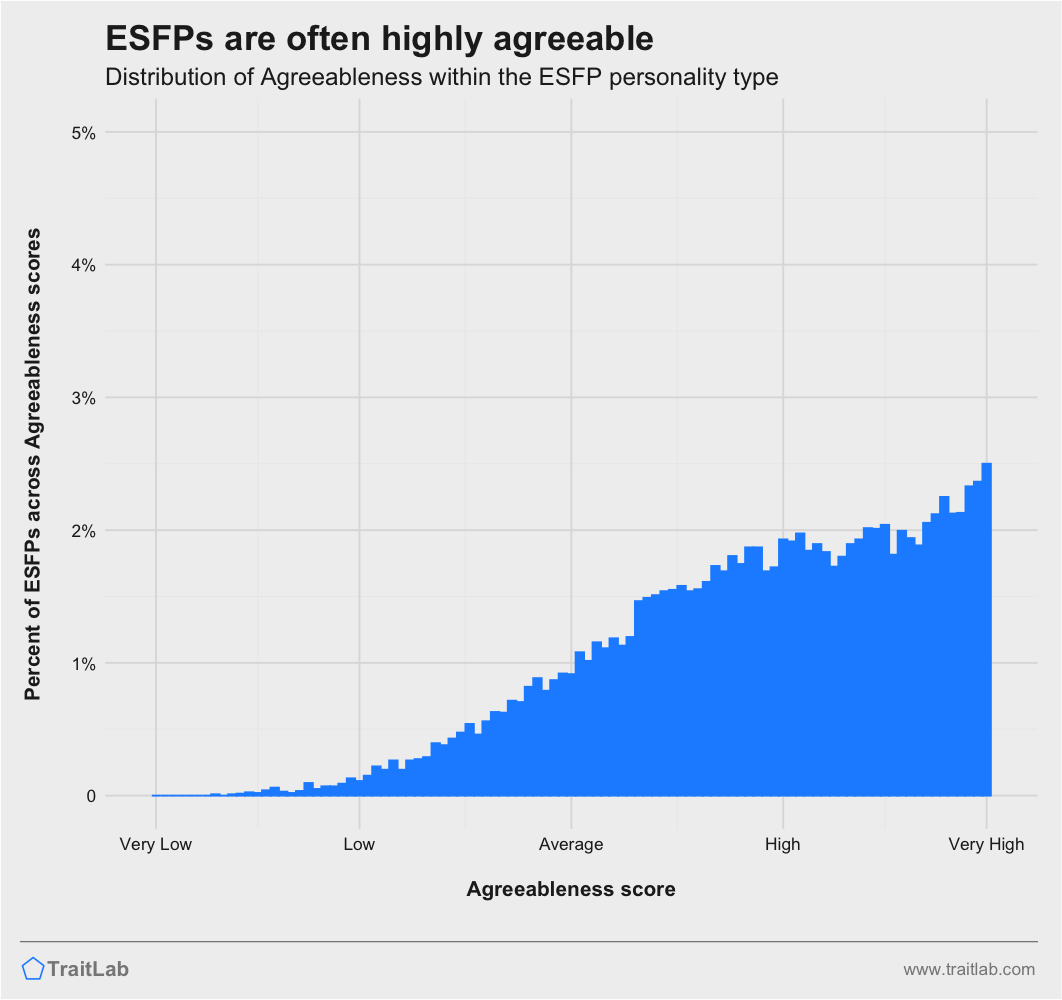
Agreeableness describes your interpersonal warmth, politeness, and empathy.
Highly agreeable people, like many ESFPs, feel a deep need to maintain warm, friendly relationships and are naturally more hesitant to impose their will on others. They will be more considerate of how their actions impact others and try to reduce or resolve interpersonal conflicts when they arise.
Less agreeable (or more demanding) people are often less concerned with others when pursuing their own goals. They are more willing to create conflict or express disagreement across most situations and feel less discomfort during interpersonal disputes.
ESFPs vary widely in Neuroticism, and there is no significant trend for ESFPs in this dimension. You can find ESFPs along the entire range of this dimension.
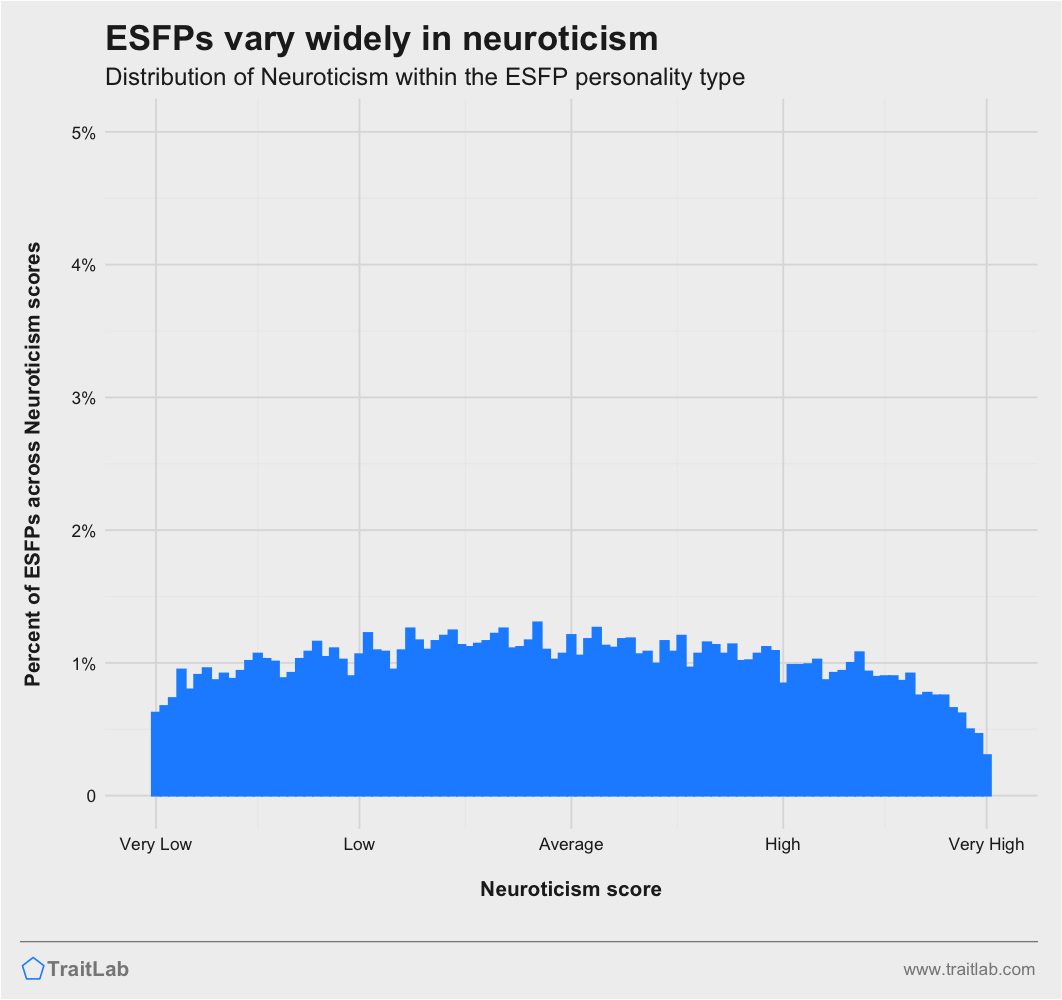
Neuroticism describes how frequently and how intensely you experience negative emotions, like anxiety, anger, and sadness.
Less neurotic people are more easy-going, have more predictable moods, and are more resilient under stress. They also experience less of the harmful types of self-consciousness, like rumination and self-doubt, reported by more neurotic people.
Highly neurotic people tend to worry more, have more frequent mood swings, withdraw when feeling distressed, and feel more self-conscious.